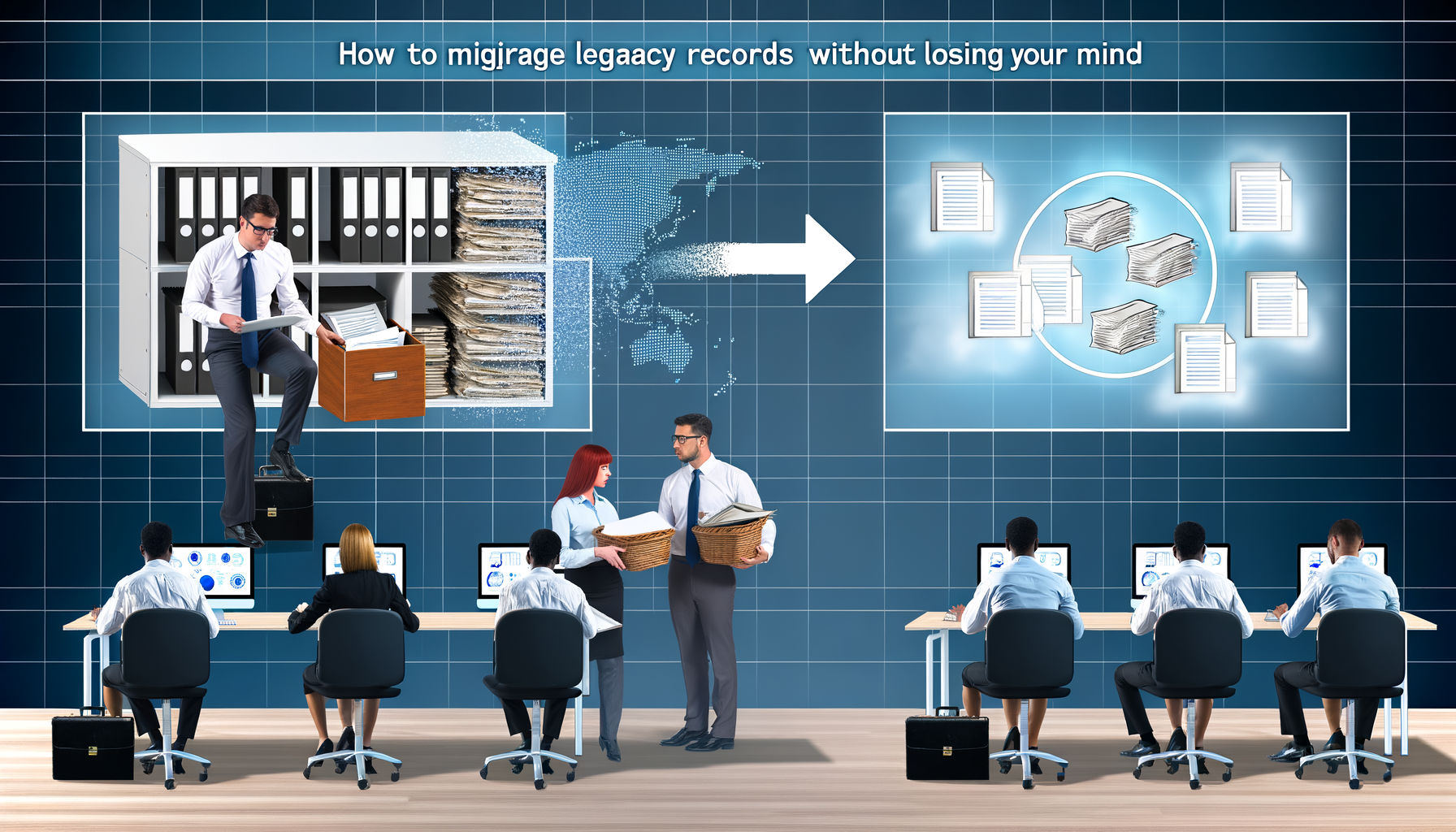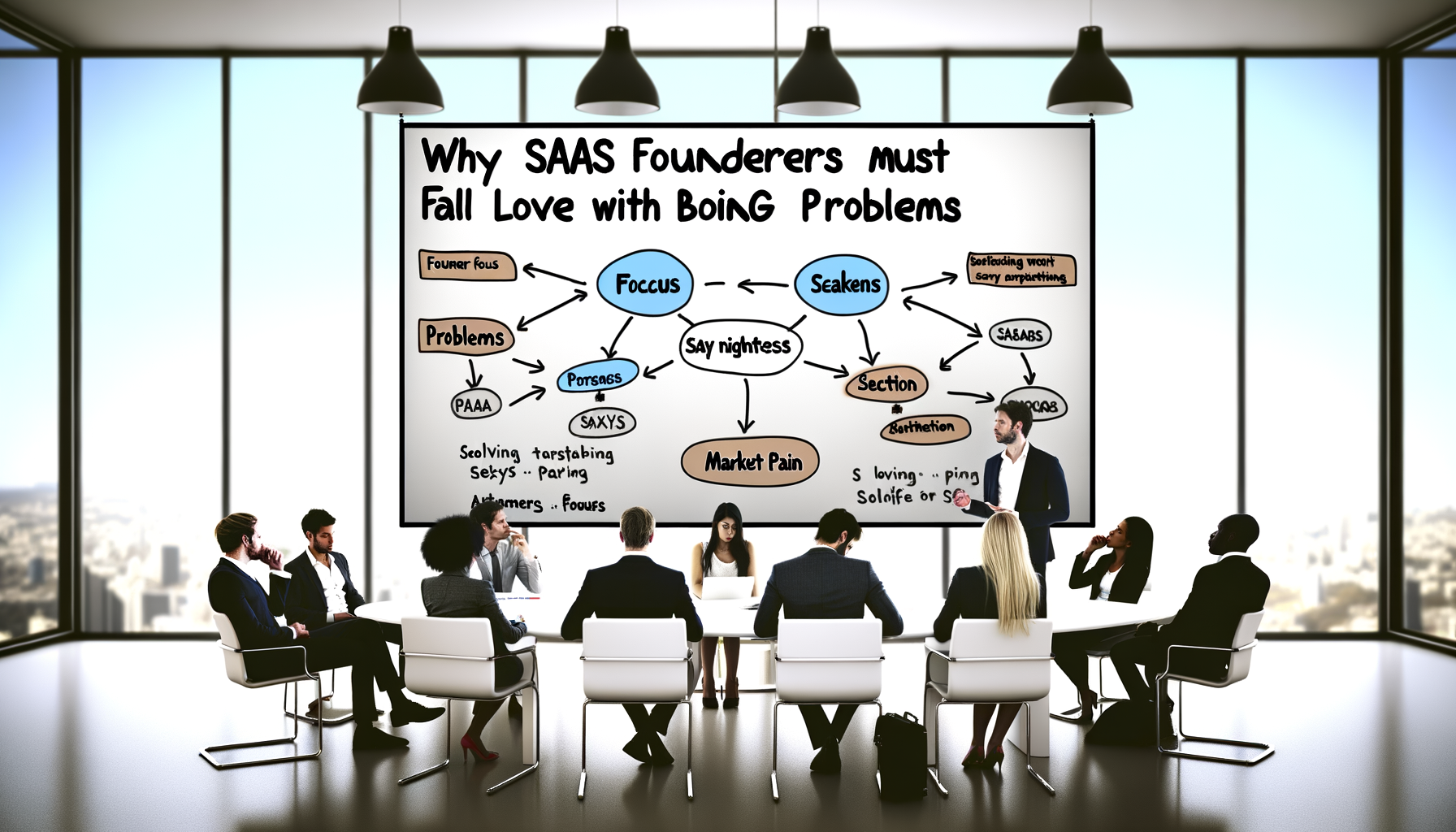
Your WhatsApp Is Leaking Company Files (And How to Stop It)
Think about the last time you sent a document over WhatsApp — quick, easy, and convenient. But have you ever paused to consider the risks involved in this seemingly innocuous action? File sharing through WhatsApp, though popular, poses significant threats to your company’s data integrity and confidentiality. As someone deeply entrenched in the world of entrepreneurship and tech innovation, I’ve witnessed firsthand how these vulnerabilities can unravel years of hard work in an instant. Let’s delve into these risks and discuss actionable strategies to mitigate them.
The Hidden Dangers of WhatsApp File Sharing
WhatsApp’s widespread use for business communication is a double-edged sword. While it facilitates effortless integration and rapid communication, it also exposes your data to unauthorized access. File security on WhatsApp is profoundly inadequate because:
- End-to-end encryption limitations: Although WhatsApp boasts end-to-end encryption, this does not extend to file storage outside the app. Once a file is downloaded, it’s vulnerable.
- Device vulnerability: Lost or stolen devices can lead to data breaches, exposing sensitive company files to malicious actors.
- Backup loopholes: Backups stored on Google Drive or iCloud are not encrypted, thus susceptible to interceptions.
Balancing Convenience with Security
While completely banning WhatsApp might seem drastic, striking a balance between usability and security is imperative. Here’s how you can achieve that equilibrium:
Implement Secure Messaging Alternatives
Adopt messaging platforms that feature stronger security protocols. Services like Signal or Wire offer enhanced safeguards for file transmission, with robust encryption that extends to backups as well. This change requires team buy-in and training, but the long-term benefits far outweigh the transition costs.
Enhance WhatsApp with Secure Integrations
Leverage integrations that add an extra layer of protection to your WhatsApp communications. For instance, using cloud services equipped with stringent security measures can ensure files remain encrypted even when shared over WhatsApp. These integrations allow you to maintain WhatsApp’s convenience while actively managing risks.
Best Practices for File Security
In addition to utilizing secure platforms and integrations, embracing best practices can significantly bolster file security:
- Regularly update software: Ensure all apps, especially WhatsApp, are up to date with the latest security patches and features.
- Implement strong passwords: Encourage regular changes and the use of complex passwords to safeguard access to both devices and applications.
- Use two-factor authentication (2FA): Where possible, enable 2FA to add an extra layer of security to your accounts.
- Educate employees: Conduct workshops or training sessions to raise awareness about potential cybersecurity threats and safe data handling practices.
Conclusion: Protecting Your Data Fortress
In today’s digitally connected world, safeguarding your company’s data is not merely an option; it’s a necessity. By understanding the inherent risks and implementing prudent security measures, you can confidently protect your corporate files from unauthorized access. Integrate secure technologies, practice vigilant cybersecurity protocols, and ensure continuous education of your workforce regarding data security. As we navigate the landscape of risk management, the path to secure, seamless data exchange is one laced with informed decisions. Let us keep innovating, building, and sharing securely. I invite you to stay engaged with Foundercrate for more insights on risk management and new-age tech solutions.
Why We Designed Our Own Cap Table Tracker
Introduction
As I embarked on my entrepreneurial journey with Foundercrate, there came a defining moment that changed the course of how I viewed equity management. Like many founders, I grappled with the complexities of cap tables, a critical component that determines not just ownership but the direction and potential of a startup. Off-the-shelf tools, though abundant, fell short in delivering what we truly needed: functionality tailored to the unique challenges faced by founders. This realization sparked a journey to design a cap table tracker that genuinely works, and I am excited to share our motivations and innovative features with you.
Understanding the Problem with Existing Tools
When I first explored the existing solutions for equity management, I encountered several challenges. The knowledge that these tools are anything but intuitive was frustrating. They often delivered an overwhelming user experience that required hours of training just to make sense of them. The pain points became clearer when I surveyed other founders and investors, gaining insights into the widespread dissatisfaction with existing SaaS features for cap tables.
The key shortcomings included:
- Lack of flexibility to handle unique equity events or complex ownership structures.
- Inadequate integration with other essential business and financial software.
- Limited transparency in tracking ownership dilution over multiple rounds of funding.
- Poor user experience, often resulting in errors and mismanagement.
What Our Cap Table Tracker Offers
Driven by the need to innovate and simplify, we designed a cap table tracker that solves these pain points. Our commitment to improving upon existing solutions led us to create a product that I believe significantly enhances how founders manage their startup equity.
1. Intuitive and User-Centric Design
Central to our SaaS features is a user-centric approach that makes managing complex cap tables more intuitive. We incorporated a straightforward interface that distills intricate equity management into digestible, error-free processes. With comprehensive tutorials and support, transitioning to our platform is seamless for any founder or investor.
2. Comprehensive, Customizable Features
Recognizing the diverse nature of startups, our cap table tracker is built to handle a wide range of cap table complexities, from simple to intricate ownership structures. It provides the flexibility to customize entries for varying equity events, a feature that allows startups to adapt and grow without changing their cap table tool.
3. Integration with Key Financial Tools
Integration was another vital area where existing solutions fell short. I understood the importance of having seamless connections with other financial software, so our tool is designed to integrate effortlessly with platforms startups commonly use. By doing this, we eliminate the silos that often plague equity management.
4. Real-Time Ownership and Dilution Tracking
A significant feature that sets our tracker apart is the ability to track ownership changes and dilution in real-time. Such transparency is crucial for decision-making and understanding how different financing rounds impact each stakeholder. This functionality empowers founders with actionable insights, making equity management strategic rather than reactive.
Embracing the Future of Equity Management
When I reflect on why we chose to design our own cap table tracker, it is really about enhancing how founders operate and communicate equity dynamics. While the existing market offered tools, their inability to meet our high standards created an exciting opportunity to innovate in the SaaS landscape.
Launching our tracker was not just about addressing unmet needs; it was a commitment to moving the needle within the startup ecosystem. We believe in a future where founders are equipped with powerful tools that save time, reduce errors, and provide profound insights into their business landscape.
Conclusion
As you navigate your entrepreneurial path, consider the systems you rely on to steer your company towards success. It is essential to utilize tools that not only manage equity but enhance your understanding and control over it. By adopting solutions like our cap table tracker, you gain a partner in your growth journey.
I invite you to explore what we’ve built with Foundercrate, and let’s embrace smarter equity management together. Reach out to engage further, and follow me on this journey of redefining how startups manage cap tables. Let’s solve more problems that matter.

RecordsKeeper.AI vs Google Drive: It’s Not Even Close
In today’s digital ecosystem, choosing the right document management system isn’t just about storage—it’s about security, compliance, and seamless workflows. For many, Google Drive has long been a go-to tool for storing and sharing files. However, as the landscape evolves, so too do our requirements. Enter RecordsKeeper.AI, a SaaS solution redefining how we handle documents. Let’s dive into the key distinctions that make RecordsKeeper.AI a standout choice for businesses prioritizing security and compliance.
Understanding the Fundamental Differences
At a glance, Google Drive offers a simple, user-friendly interface as a part of its broader suite of productivity tools. However, what it provides in simplicity and accessibility, it lacks in specialised features for businesses that demand high levels of digital security and compliance. This is where RecordsKeeper.AI comes into its own.
Security: A Top Priority
In the realm of SaaS tools, security isn’t just an added feature—it’s a necessity. While Google Drive includes basic encryption and two-step verification, it doesn’t cater to the specialized security needs of regulated industries. RecordsKeeper.AI, on the other hand, was crafted with these needs in mind. It offers end-to-end encryption and customizable access controls, ensuring that only authorized personnel can view or edit sensitive documents.
For any organization dealing with confidential data, having control over document access is not just beneficial; it’s vital. Ensuring that data is secure from internal mishandling or external threats can save a company from legal and financial repercussions.
Compliance: Built Into the System
Compliance is another critical factor where the paths of Google Drive and RecordsKeeper.AI diverge. Google Drive is a fantastic tool for general use, but it wasn’t necessarily designed to meet stringent industry-specific compliance standards out of the box. Meanwhile, RecordsKeeper.AI includes built-in tools to help meet various regulatory requirements.
- GDPR Compliance: RecordsKeeper.AI’s automated compliance features make it simpler for businesses operating in or with partners in the EU to meet GDPR guidelines.
- HIPAA and FINRA: Particularly relevant for healthcare and financial sectors, this SaaS offers enhanced measures that align with HIPAA and FINRA regulations.
As regulatory landscapes continue to evolve globally, aligning document management solutions with such standards is crucial for businesses to avoid penalties and ensure smooth operations.
Streamlined Workflows: More Than Just Storage
Traditional storage solutions often lack the dynamic workflow capabilities necessary for modern business operations. While Google Drive allows for document sharing and collaboration, RecordsKeeper.AI goes a step further. It incorporates intelligent workflows and AI-powered tools to automate document-oriented tasks, streamlining procedures that would otherwise require significant manual intervention.
Automating mundane, repetitive processes such as approval chains or document categorization saves valuable time and reduces human error, directly translating into increased productivity and efficiency.
Conclusion: The Clear Choice for Modern Enterprises
In the showdown of SaaS comparison, particularly when considering requirements for security, compliance, and productivity, RecordsKeeper.AI distinctly outperforms what Google Drive can offer. By focusing on the intersections of these key areas, I recognized how RecordsKeeper.AI helps my organization not only store data but truly manage it with intelligence and integrity.
If you find yourself navigating complex compliance landscapes or are seeking robust security for your document management systems, I highly recommend exploring RecordsKeeper.AI as a trusted partner in your digital transformation journey. Interested in technology paving the path forward? Follow along as we explore these innovations and more at Foundercrate.

How to Migrate Legacy Records Without Losing Your Mind
As someone who’s navigated the tumultuous seas of tech entrepreneurship, I know all too well the daunting challenge that lies in migrating legacy records. This isn’t just a mundane task; it’s a mission-critical operation that, if done improperly, can lead to disastrous downtime or, worse, data loss. Having dealt with this nerve-wracking process myself, I’ve distilled the essence of a smooth data migration down to a few critical steps. Whether you’re a startup founder or handling SaaS operations, I’m here to share strategies to make your transition from legacy systems as painless as possible.
Understanding the Complexity of Legacy Systems
Legacy systems are often deeply entrenched in a company’s operations. Despite their age, these systems carry vast amounts of data integral to business continuity. The challenge lies in the fact that such systems are built on outdated technology, making data migration fraught with technical hurdles. The danger of encountering compatibility issues is real, yet the possibility of unlocking significant operational efficiencies makes it a necessary endeavor.
Crafting a Clear Data Migration Strategy
No captain sails without a map, and no business should begin data migration without a comprehensive strategy. Here’s the framework I’ve utilized:
- Assessment and Analysis: Begin by doing a thorough assessment of both the legacy system and the target system. Understand data structures, dependencies, and the volume of data involved.
- Data Mapping: Develop a clear map of how data from the old system will transfer to the new system. This map acts as a blueprint and helps in identifying potential mismatches and data transformation needs.
- Risk Management: Evaluate potential risks, from data corruption to compliance issues, and create a mitigation plan. In my journey, addressing these risks upfront has saved invaluable time and resources later down the line.
Emphasizing Data Quality and Consistency
Ensuring the quality and consistency of data during migration is crucial. Data cleansing processes—such as removing duplicates, correcting inaccuracies, and updating missing information—should be part of your migration plan. Clean data not only prevents future operational headaches but also enhances the reliability and speed of your new system.
Choosing the Right Data Migration Tools
There’s no one-size-fits-all tool for data migration. Select tools that align with your specific needs, whether it involves complex data transformation or simple data transfer. Leveraging SaaS solutions that offer flexibility and scalability can make a significant difference. Through Foundercrate, I’ve often connected with tools that streamline migration processes, offering robust support and customizability to our unique requirements.
Conducting Seamless System Migration
System migration encompasses more than transferring data; it’s about ensuring seamless integration into the daily operations of your business. Careful planning around downtimes, employee training, and testing phases cannot be overstated. Here’s my goto guide:
- Testing: Run pilot tests to monitor data integrity and functionality in the new system. It’s essential to conduct both unit testing and system testing for full assurance.
- Employee Training: Equip your team with the necessary skills to handle the new system effectively. Consider it not just an upgrade of your software but an upgrade of your human resources.
- Continuous Monitoring: After the migration, keep a keen eye on how the data operates within the new system. Immediate adjustments based on performance metrics can prevent future complications.
Seize the Yearly Trends in Data Migration
In keeping pace with evolving data transfer trends, businesses should embrace automation and AI-driven tools. These technologies promise faster, more accurate data migrations and are reshaping how companies digitize their records. I’ve observed that integrating machine learning within this sphere accelerates adaptation and helps in foreseeing potential issues.
In conclusion, while data migration from legacy systems comes with its fair share of trials, with a well-outlined strategy, diligent execution, and the right tools, it can transform your business operations for the better. If you’re considering such a migration, I encourage you to connect with Foundercrate, where our insights and resources could further simplify your journey. Feel free to reach out, and together, let’s ensure your transition doesn’t just preserve your data but also enhances it.

Why Compliance Should Be a Brand Differentiator
Creating Value Through Compliance: A Game-Changing Brand Strategy
In the fast-paced world of startups and tech-driven enterprises, compliance is often deemed a challenging box to tick, a necessity rather than a potential value driver. However, what if I told you that compliance could be leveraged as a significant strategic advantage and a brand differentiator? In my experience as the founder of Foundercrate, I’ve seen how robust compliance not only ensures adherence to laws and regulations but also fortifies brand trust and opens doors to new opportunities. Let’s delve deeper into how compliance can be seamlessly integrated into your brand strategy to set your startup apart.
Understanding the Role of Compliance in Brand Strategy
When it comes to brand strategy, every company’s primary goal is to establish a unique identity that resonates with its target audience. Compliance is typically perceived as a legal obligation, but reimagining it as a cornerstone of your brand can fundamentally alter customer perception. The reality is that in today’s digital ecosystem, consumers are becoming more discerning and value transparency and security. Leveraging compliance as a secure bridge between your brand and your audience can help build an indestructible trust nexus.
Compliance as a Tool for Building Trust
Trust is the cornerstone of any successful brand relationship. When your startup transparently demonstrates adherence to legal and ethical standards, it sends a message of integrity and responsibility. For instance, in the SaaS industry where my venture operates, data protection and privacy compliance are paramount. Showcase your commitment to these through certifications and transparent practices. This creates an implicit promise to customers that their data is treated with the utmost care and respect, hence enhancing brand loyalty.
Compliance in Action: Practical Steps for Startups
- Implement a Comprehensive Compliance Program: Start by developing a compliance framework tailored to your industry standards. This program should cover all pertinent regulations and be a living document that adapts to new challenges and laws.
- Invest in Training and Technology: Educate your team about the importance of compliance and equip them with the necessary tools and technologies that simplify the process. Automation can significantly mitigate risks associated with compliance failures.
- Communicate Compliance Efforts: Make sure customers are aware of your compliance status. Regular updates, transparency reports, or a dedicated compliance webpage can communicate your brand’s commitment to security and legal integrity.
Legal Differentiation: Setting Your Brand Apart
Incorporating compliance into your brand strategy can create legal differentiation in a crowded market. Consider leading tech giants that have historically rooted their brand narrative in privacy and ethical data usage. These companies are not just defined by what they offer technologically but by their corporate ethos, where compliance is a unique selling proposition (USP).
Undoubtedly, differentiating your brand through compliance necessitates commitment and resources, but the payoff in terms of competitive advantage is tremendously rewarding. For marketers and founders like us, products and services adhere to a ‘brand promise’—our dedication to compliance solidifies that promise, making it both tangible and trustworthy.
Turning Compliance Challenges Into Opportunities
The path to leveraging compliance as a brand strategy is not devoid of challenges. There are costs, complexities, and constant updates. However, viewing these as opportunities rather than obstacles can redefine the narrative. Each regulatory hurdle surmounted is another badge of honor, reinforcing your company’s robust foundations and enhancing brand perception.
Moreover, in B2B contexts, where businesses seek partners who contribute positively to their own compliance obligations, demonstrating your compliance can seal the deal on significant collaborations and contracts.
Conclusion: Embrace Compliance for Long-term Success
From my vantage point, weaving compliance into the fabric of your brand strategy is an undeniably powerful approach. It’s a meticulous process that requires ongoing dedication, but the resultant trust and loyalty you forge with your stakeholders are priceless. By focusing on compliance, we transform a perceived burden into a demonstrable differentiator that not only champions our brand’s integrity but also propels us into new, expansive opportunities.
As entrepreneurs and leaders, it is our prerogative to shape the narrative by choosing to make compliance a symbol of brand trust. I invite you to embrace this paradigm shift and explore more insights on this transformative journey with us. Let’s redefine the future of branding, not just through innovation but through steadfast compliance.

The One SaaS Metric That Matters More Than ARR
Introduction
Understanding the success of a SaaS business goes beyond simply looking at revenue streams. As a founder, I’ve learned that some metrics are worth more than they initially seem. While Annual Recurring Revenue (ARR) is a commonly used benchmark, there’s another metric that uncovers deeper insights: Return on Investment (ROI) per workflow automated. In this article, let’s explore why this metric matters and how to effectively track it for sustainable growth.
The Importance of SaaS Metrics
In the fast-paced world of SaaS, a plethora of metrics can be overwhelming. However, collecting comprehensive data is crucial to gauge performance. The trick lies in identifying the metrics that truly reflect the health of the business. Apart from the popular ARR, metrics that delve into efficiency and effectiveness, like ROI per workflow automated, provide a nuanced view of business operations.
What is ROI Per Workflow Automated?
In my journey as a SaaS entrepreneur, I’ve witnessed the transformative power of automation. Simply put, ROI per workflow automated measures the financial return generated by automating specific workflows within your platform. This metric is invaluable as it aligns closely with customer efficiency and satisfaction, which in turn drives user retention and business growth. It highlights whether the automation efforts are making a meaningful financial impact.
Calculating ROI Per Workflow
- Identify Automated Workflows: Start by listing the processes that have been automated. This could range from data entry tasks to complex reporting adaptations.
- Measure Time Saved: Quantify the time saved by automation, which directly reduces costs and increases productivity for your clients.
- Evaluate Cost Savings: Calculate the reduction in operational expenses as a result of automation. This accounts for resources that are free to focus on higher-value tasks.
- Assess Revenue Generation: Determine any direct revenue increases attributed to faster turnaround times and improved service delivery.
- Calculate ROI: Use the formula: ROI = (Revenue + Cost Savings – Cost of Automation) / Cost of Automation.
Why ROI Per Workflow Is More Impactful Than ARR
ARR is a great indicator of revenue generation, but it doesn’t paint the full picture of efficiency or customer success. ROI per workflow automated highlights the operational efficacy and directly correlates to user satisfaction—a key driver of growth in the SaaS sector. By focusing on this metric, we can uncover stories of how automation enhances value for users, translating into longer-term revenue through renewals and upsells.
How To Use This Metric For Growth
- Customer Testimonials: Sharing stories of client successes due to workflow automation not only builds credibility but also resonates with potential customers.
- Enhance Product Features: Insights gathered from the ROI metric can guide improvement in features that yield the highest returns.
- Improve User Onboarding: By identifying the workflows that deliver high ROI, streamline your onboarding process to quickly introduce these features to new users, increasing their initial engagement.
Practical Examples of ROI Per Workflow Automated
Let me share a real-world scenario. A client using our service automated their data aggregation process, which previously required manual input from multiple teams. Automation slashed processing time by 80%, resulting in significant labor cost-saving and minimal errors. This case proved a high ROI per workflow automated and illustrated enhanced user success and loyalty.
Conclusion
While revenue metrics like ARR are vital, they aren’t the sole indicators of success in the SaaS realm. ROI per workflow automated offers a deeper insight into how efficiently resources are being employed, directly impacting user success and retention. By focusing on refining and tracking this metric, we can create SaaS platforms that not only grow but thrive by truly serving customer needs.
For more insights on SaaS metrics and strategies for optimizing automation ROI, make sure to follow along as I continue to explore innovative ways to drive SaaS growth!

How Data Room Security Builds Investor Confidence
In the fast-paced world of entrepreneurship, where securing funding can make or break a startup, the ability to instill investor confidence is invaluable. Among the myriad tools in a founder’s arsenal, a secure and efficient Data Room stands out as a pivotal element in building trust. Let’s delve into how reinforcing fundraising security through a robust Data Room can enhance investor confidence and ultimately play a crucial role in your fundraising efforts.
The Importance of Data Room Security
When I embarked on my entrepreneurial journey, one lesson became abundantly clear: transparency is crucial, but it must be rooted in unwavering security. Investors are the lifeblood of any scaling business, and to attract them, one needs more than just a compelling story. A secure Data Room offers that assurance by safeguarding sensitive information and demonstrating meticulous planning on the part of the startup.
A Data Room functions as an online repository where all your critical documents—financial reports, patent filings, business plans—are stored. By utilizing this tool, you present a professional front that signals readiness for investment. But mere storage isn’t enough; the security of these rooms is what truly builds trust among investors.
Show, Don’t Tell: Building Trust Through Secure Access
In my own experiences, I’ve found that showing investors that their sensitive data is safeguarded fosters a sense of security far more than merely assuring them of it with words. By leveraging the secure access controls of a Data Room, you provide investors with a tangible demonstration of your commitment to protecting their interests. This is achieved through:
- Granular Control: I ensure that each stakeholder has precise access levels tailored to their role, allowing them only as much access as needed.
- Activity Tracking: By keeping tabs on every document viewed or downloaded, I gain insights into investor interests, which can steer subsequent communications and pitches.
- Data Encryption: Implementing industry-standard encryption to protect data ensures that even in the unlikely event of a breach, information remains confidential.
Fundraising Security as a Trust Signal
From my perspective, nothing speaks louder than precautionary actions taken to protect sensitive data. When I consider fundraising security, it becomes more than just a logistical concern—it’s a vital trust signal. Investors, especially in the venture capital (VC) scene, often view robust security measures as a reflection of overall management acumen and reliability.
How Secure Data Rooms Foster Investor Confidence
Here are some specific ways that secured Data Rooms can enhance investor confidence:
- Professionalism: A well-organized Data Room communicates professionalism. It shows that a startup is organized, has nothing to hide, and respects the investor’s need for critical information.
- Risk Mitigation: For investors, knowing that sensitive documents are well-protected mitigates the risk associated with potential leaks that could harm both the startup and investor interests.
- Due Diligence Efficiency: A secure and easily navigable Data Room streamlines the due diligence process, making it easier for investors to locate needed documents quickly, which speeds up the investment cycle.
The SaaS Security Advantage
In the realm of fundraising, leveraging SaaS-based Data Rooms comes with its advantages. Cloud-based solutions not only offer scalability but also incorporate the latest in data security technology. From my experience, maintaining data integrity across multiple devices and platforms through a SaaS solution is seamless, further buttressing the trust I aim to build with potential investors.
Why Founders Should Prioritize Security from Day One
I’ve often advocated that security should be ingrained in a startup’s DNA from the outset. As your company grows, so does the scrutiny from potential investors. Integrating fundraising security measures, like those provided by a reliable Data Room, ensures that when it’s time for an investment, you can confidently present not just compelling business stats but also a secure investment opportunity.
Conclusion: Be Ready, Be Secure
In conclusion, a secure Data Room is not just a repository—it’s a powerful tool that conveys preparedness and respect towards your investors. By prioritizing fundraising security, you are not only protecting your business but also paving a smoother road toward successful fundraising. My advice to fellow founders is simple: invest in secure infrastructure early on, and the confidence it inspires will follow.
If you’re keen on learning more about building investor trust through cutting-edge security measures, or if you want updates on the latest in entrepreneurship and fundraising, feel free to keep engaging with my insights. Building and securing the future of your startup begins today.

Why SaaS Founders Must Fall in Love With Boring Problems
Understanding the Appeal of Boring Problems in SaaS
As founders, we’re constantly tempted by the allure of sexy ideas and revolutionary innovations that promise to reshape industries overnight. However, my journey in the SaaS niche has taught me something counterintuitive yet profoundly impactful: it is often the boring problems that yield the most significant opportunities for growth and success. Addressing these seemingly mundane challenges can set a solid foundation for sustainable scalability and profitability.
The SaaS Niche: A Playground for Boring Problems
SaaS, or Software as a Service, is a rapidly growing sector that caters to a wide array of industries. It’s a bustling ecosystem with a myriad of services ranging from customer relationship management to accounting solutions. With such a diverse range of applications, the SaaS niche naturally encounters numerous persistent, overlooked challenges that need solutions.
Here’s why directing my Founder Focus towards these issues has been beneficial:
- Recurring Market Demand: Essential services related to compliance, efficiency, and data management are perennially in demand, ensuring a steady customer base willing to invest in solutions.
- Predictable Revenue Streams: Subscription models offer reliable revenue forecasts, and when we address a fundamental business need, churn rates often decrease, boosting long-term profitability.
- Opportunity for Enhanced Customer Relationships: By solving critical pain points, we can become indispensable partners to our clients, fostering loyalty and creating avenues for upselling and cross-selling.
How to Identifying Boring Yet Lucrative Problems
The key to success lies in identifying the right set of problems to tackle. Here’s how I’ve approached this:
– Observational Research: Spending time understanding customer workflows and pinpointing the inefficiencies they face daily has often led to uncovering profitable opportunities.
– Customer Feedback and Surveys: Engaging directly with existing and potential users to gather insights removes the guesswork from understanding genuine market pain.
– Competitive Analysis: Studying competitors to identify service gaps that they overlook can lead to creating solutions that provide more value.
Implementing Problem Selection and Founder Mindset
The mindset with which we approach problem selection is crucial, and it shapes the essence of our offerings. Here are some guiding principles that I utilize in maintaining focus:
Embrace Unoriginality: It’s okay if the problem doesn’t seem groundbreaking. The value lies in the solution’s execution, scalability, and accessibility that we as founders can uniquely offer.
Prioritize Simplicity and Efficiency: The objective should be to simplify processes, enhance productivity, and allow users to focus on higher-order tasks. Solutions should not add complexity but should eradicate it.
Leverage Incremental Innovation: Incremental improvements in core functionalities can substantially elevate user satisfaction and retention.
Building Success Through Boring Problems
Solving tedious and painful issues keeps us grounded and in tune with market needs. Here are some of the benefits I’ve seen firsthand:
– **Stability and Growth:** By tackling problems customers can’t ignore and continuously optimizing our offerings, we lay the foundation for stable business growth.
– **Market Authority and Trust:** Consistently delivering on functional solutions reinforces our credibility and positions us as authorities in niche markets.
– **Agility in Adapting to Change:** With a laser focus on essentials, we are better positioned to adapt strategies as market conditions and customer needs evolve.
Conclusion: The Beauty of Boring Problems
As we strive to make an impact, let’s not shy away from the mundane. It’s these core challenges that define the essence of what it means to be a successful SaaS founder. Focusing on them aligns our purpose with actual customer needs and paves the way for long-term achievement. By embracing this mindset, we not only ensure the survival of our ventures but also the ongoing satisfaction and loyalty of our users.
I encourage you to keep your Founder Focus on these seemingly dull but essential areas. Explore the overlooked pain points, and let’s transform them into sustainable triumphs. There’s beauty and profitability in what might first appear boring. Let’s make them our strategic advantage.
Feel free to reach out or follow my insights as we navigate this journey together, capitalising on opportunities where others see none.

Why SaaS Founders Must Fall in Love With Boring Problems
If there’s one lesson the years in entrepreneurship have taught me, it’s that sexy ideas rarely pay the bills. At the heart of successful startups, especially in the SaaS space, lies a love affair with problems deemed “boring” or “tedious.” These are the pains no one else wants to tackle, and yet, they hold the key to immense opportunity when approached with the right mindset.
Understanding the SaaS Landscape: Lessons from Real-world Problems
The SaaS industry is booming, characterized by its ability to provide scalable solutions without the need for extensive hardware investments. But with this explosive growth comes competition, making differentiation crucial. Here’s where the founder focus on niche, “boring,” yet persistently painful problems sets the stage for success.
I remember my initial foray into the SaaS niche. It was filled with excitement and the urge to innovate with the next big idea. Yet, it wasn’t until I dug deep into persistent, overlooked issues faced by businesses that I found real traction. Think of areas like supply chain inefficiencies, outdated billing systems, or cumbersome HR processes. These aren’t topics that will make the headlines, but they are vital pain points that, when solved, can transform a company’s operations.
Embracing the Drudgery: Why Pain Points Matter
Every entrepreneur dreams of creating something revolutionary. However, what most overlook is the revolution often lies in the simplification of the mundane. When you focus on a niche within the SaaS platform that addresses a recurring problem that companies universally face, you position yourself as an indispensable asset. This approach is grounded in reality, targeting problems with a pre-existing demand for solutions.
Consider market pain as the guiding light. It’s crucial to conduct thorough research to identify these issues. Engage with potential users, gather feedback, and observe where the inefficiencies lie in their processes. This is where your SaaS solution should aim to make an impact, not just by automating processes, but by solving them so simply that users wonder how they ever managed without it.
The Entrepreneur’s Mindset: Driving Change through Boring Solutions
Adopting the right mindset is crucial. It requires perseverance and a desire to delve into the foundational problems that everyone faces but few dare to address. This persistence and willingness to engage with the unglamorous aspects of technology solutions often differentiate thriving SaaS founders from those who struggle.
Remember, founding a business is not just about the product but the problem it solves. I’ve been through countless pitches, and the ones that resonate are those deeply rooted in understanding and articulating a genuine problem. It always comes back to the founder’s focus—an unrelenting commitment to their niche and to solving a pain most efficiently and innovatively.
Measuring Success: From Idea to Execution
After honing in on a problem, the next step is execution. This means building a solution that integrates seamlessly into existing workflows, providing tangible benefits that users can immediately see. Stability, ease of use, and ongoing support are cornerstones of a successful SaaS offering. As you implement your solution, the metrics of success are rooted not just in user acquisition but in user retention and advocacy.
It’s vital to keep iterating based on customer feedback. As you solve one problem, listen for others that arise. This continuous evolution positions your SaaS product as a growing, breathing tool that adapts to user needs, thereby solidifying its place in the market.
Conclusion: Boring is the New Brilliant
As SaaS founders, it’s essential to embrace the boring. This is where the most significant opportunities often lie. The problems that seem tedious on the surface are the ones crying out for change and leadership. By committing to solve these problems with innovative solutions, you not only serve your market but lay the groundwork for sustainable success.
I challenge you to shift your focus today. Instead of chasing the seductive allure of what’s “sexy,” look closely at what’s problematic and persistent. These are the facets of entrepreneurship that will drive you—and your SaaS business—to the forefront of industry transformation.
If this resonates with you and you are inclined to dive into the world of problem-solving with me, I invite you to follow for more insights on developing a winning founder mindset and making your mark in the SaaS niche.

Why SaaS Founders Must Fall in Love With Boring Problems
In the world of entrepreneurship, particularly in the SaaS niche, coming up with flashy ideas can often steal the limelight. However, if there’s one lesson I learned in my journey with Foundercrate, it’s that diving deep into the seemingly mundane can lead to the most impactful innovations. Every founder must embrace the notion that sexy ideas don’t pay the bills. Solving tedious, painful problems does.
Understanding the Founder Focus
When embarking on a new venture, especially in the SaaS niche, the focus of the founder can make or break the startup. It’s easy to be seduced by glamour and the lure of cutting-edge technology or trendy sectors, but in reality, real value lies in solving real problems that people face daily. This is where the true essence of entrepreneurship shines.
Think about the number of times you’ve been bogged down by tasks that seem mundane but are essential. Those moments present an opportunity for innovation. As an entrepreneur, zeroing in on these pain points can lead to creating products that not only fill a market void but are also indispensable to users.
Why the SaaS Niche Excels in Solving ‘Boring’ Problems
The SaaS model inherently lends itself to solving repetitive, not-so-glamorous problems. By nature, SaaS applications streamline, automate, and enhance efficiency. They cater to the backbone operations of businesses by preventing the crew’s ship from sinking in the monotonous details.
- Billing and invoicing—functions every business relies on.
- Customer support—resolving issues and maintaining relationships.
- HR and payroll management—ensuring staff are managed efficiently.
These aspects might not make headlines, but they are the gears that turn the wheels of businesses globally. A founder with a profound focus will look at these processes not as chores but as essential services demanding innovation.
Spotting Market Pain
Before diving into solution-building, it is crucial to recognize and understand the existing market pain. This involves, first and foremost, listening to your potential customers. Engage with them; ask questions about what frustrates them, what tasks they loathe, and what consumes their productive time.
Through these conversations, you can identify patterns and common pain points. It’s the seemingly small annoyances that, when transformed and automated, yield some of the most successful SaaS platforms. Think of how many processes you could simplify or enhance to make someone’s work life just a bit better.
Capitalizing on ‘Boring’ Opportunities
In my experience, the ‘boring’ opportunities offer some of the most promising paths to success. Here are a few steps to capitalize on such opportunities:
- Research Thoroughly: Understand the current solutions and pinpoint their shortcomings.
- Engage with Users: User feedback is a treasure trove. It helps fine-tune your approach.
- Iterate Quickly: Develop a minimum viable product (MVP), test it, gather feedback, and iterate continually.
The beauty of tackling boring problems is that you enter spaces often overlooked, giving you a distinct advantage over competitors chasing the next big thing.
Conclusion: Embrace the ‘Boring’
It might not be glamorous, but shifting your founder mindset to embrace the boring can transform your startup journey. As I navigated the challenges of launching and scaling Foundercrate, the lessons I gathered continually point towards the undeniable truth: efforts to alleviate day-to-day annoyances reveal lucrative opportunities within the SaaS niche.
If anything, remember that profound impact often hides in unassuming places. Commit to solving these tedious problems, and let them pave the road to your entrepreneurial success. For more insights on the entrepreneurial journey and innovative ideas in SaaS, follow along as I explore these themes in greater depth, sharing experiences and lessons learned.
